Digital Poster
New Insights on Relaxation Mechanisms
ISMRM & ISMRT Annual Meeting & Exhibition • 10-15 May 2025 • Honolulu, Hawai'i

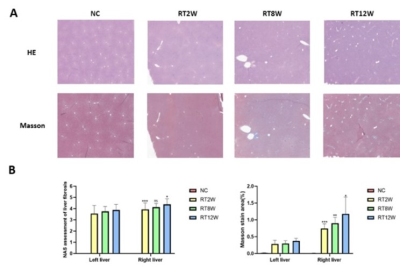 |
Computer Number: 33
4459. T1rho
Relaxation Time as a Quantitative MRI Biomarker for Fibrosis
Severity in Radiation-Induced Liver Disease: An Experimental
Study in Rats
Y. Wang, Y. Jiang, J. Wen, Y. Zhang, Y. Wang, F. Zhao
The First Affiliated Hospital, Zhejiang University School of Medicine, Hangzhou, China
Impact: T1rho MRI shows potential as a non-invasive
method for detecting and monitoring liver fibrosis,
enhancing early RILD diagnosis and guiding radiotherapy
adjustments if validated in human studies.
|
|
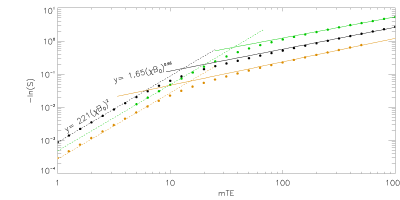 |
Computer Number: 34
4460. Field
dependence of T2 relaxation due to diffusion through an
inhomogeneous medium.
P. van Gelderen, J. de Zwart, Y. Wang, J. Duyn
National Institutes of Health, Bethesda , United States
Impact: This study helps to explain a previously
observed linear dependence of R2 relaxation
on the field strength (ISMRM2023:4342) by simulating the
effects of diffusion through the iron-induced field
inhomogeneities.
|
|
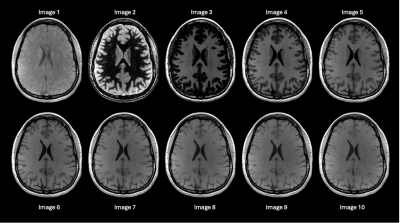 |
Computer Number: 35
4461. Cartesian
MPnRAGE for Efficient Simultaneous Multi-Contrast and
Quantitative Relaxometry Imaging
C. Allen, K. Johnson, A. Alexander, S. Kecskemeti
University of Wisconsin-Madison, Madison, United States
Impact:
Cartesian MPnRAGE provides an accurate way for efficient qT1 mapping to facilitate applications in research or clinical scanning sessions with limited scan time. |
|
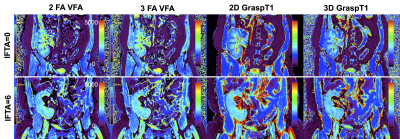 |
Computer Number: 36
4462. Diagnosis
of Fibrosis with Magnetization-Prepared Golden-angle RAdial
Sparse Parallel (MP-GRASP) T1Mapping in Renal Allografts
O. Bane, L. Feng, D. Xia, M. Liu, I. Bolger, S. Calle, J.
Dyke, M. Menon, S. Seshan, S. Salvatore, I. Stillman, T.
Muthukumar, S. Farouk, B. Taouli, S. Lewis
Icahn School of Medicine at Mount Sinai, New York, United States
Impact: Renal T1 showed diagnostic sensitivity to the
presence of renal allograft fibrosis, even in patients with
preserved renal function, and thus can potentially be useful
to select patients for biopsy or other interventions before
serum eGFR decline.
|
|
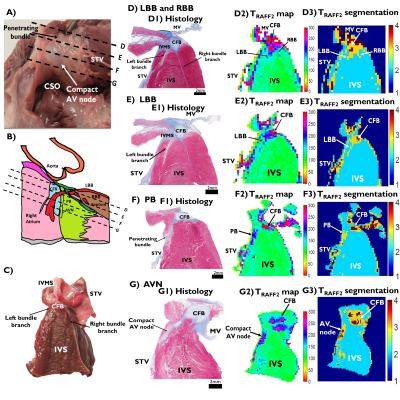 |
Computer Number: 37
4463. Visualization
and Quantification of the Atrioventricular Conduction Axis
Structure Using Rotating Frame Relaxation Maps in the Swine
Heart
Y. Li, V. Casula, T. Liimatainen
University of Oulu, Oulu, Finland
Impact: AVCA structure can be visualized using RAFF2 and
T1ρ relaxation time maps without contrast agents.
|
|
 |
Computer Number: 38
4464. Investigating
the sensitivity of NIPAM gel dosimetry in CyberKnife systems
using MRI-based R2 mapping.
S-L Peng, Y-H Lin, F-Y Su, H-Y Chen, W-Y Chen, C-H Yao
China Medical University, Taichung, Taiwan
Impact: The findings suggest potential applications of
NIPAM gel dosimetry in verifying dose delivery across
various stereotactic treatments.
|
|
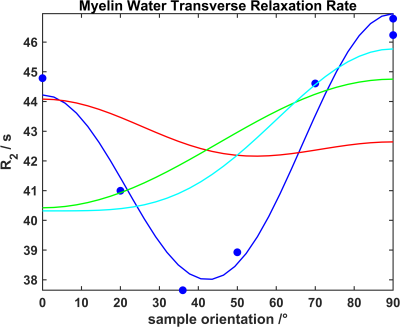 |
Computer Number: 39
4465. Investigations
of T2 anisotropy in ex vivo WM using direct sample reorientation
A. Pampel, N. Wallstein, C. Jäger, R. Müller, H. Möller
Max Planck Institute for Human Cognitive and Brain Sciences, Leipzig, Germany
Impact: This study shows that T2 anisotropy
observed under optimized ex
vivo conditions cannot be described by the current
models used in the MRI community.
|
|
 |
Computer Number: 40
4466. Development
of a Double Echo-Shifted QUTE for quantification of T2*
relaxation time at Ultra-High Field MRI.
S. Shin*, A-M Oros-Peusquens*, S. D. Yun, N. J. Shah
Forschungszentrum Jülich, Jülich, Germany
Impact: The proposed sequence offers an opportunity to
sample different ranges of TE images and quantify both T2* and D information
without a significant increase in scan time. This method is
expected to make significant contributions to the study of
neurofluids.
|
|
 |
Computer Number: 41
4467. Water
Relaxation Atlas for Age- and Region-Specific Metabolite
Correction in the Osprey MRS Analysis Workflow
G. Simegn, Y. Song, S. Murali-Manohar, H. Zöllner, C.
Davies-Jenkins, K. Hupfeld, D. Simicic, A. Gudmundson, E.
Muska, S. Hui, E. Carter, G. Oeltzschner, D. Dean III, C.
Ceritoglu, T. Ratnanather, E. Porges, R. Edden
The Russell H. Morgan Department of Radiology and Radiological Science, Johns Hopkins University School of Medicine, Baltimore, United States
Impact: Integrating the age- and region-specific water
relaxometry atlas into Osprey improves MRS metabolite
quantification, particularly in aging studies, by reducing
biases in water-referenced corrections.
|
|
 |
Computer Number: 42
4468. Comparing
the test-retest reproducibility of quantitative T1 and T2
mapping: DESPOT and 3D-QALAS
G. Simegn, B. Gagoski, Y. Song, D. Dean III, K. Hupfeld, S.
Murali-Manohar, C. Davies-Jenkins, D. Simicic, J. Wisnowski,
V. Yedavalli, A. T. Gudmundson, H. Zöllner, G. Oeltzschner,
R. Edden
Russell H. Morgan Department of Radiology and Radiological Science, Johns Hopkins University School of Medicine, Baltimore, United States
Impact: Establishing the reproducibility and accuracy
of T1 and T2 mapping
is crucial for their adoption in clinical practice and
longitudinal studies, particularly for ‘hybrid’ methods,
like DESPOT and QALAS, that map T1 and T2 from
a set of mixed-contrast images.
|
|
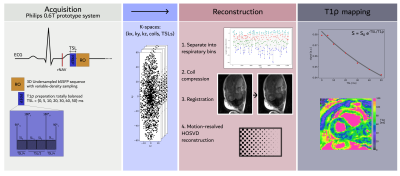 |
Computer Number: 43
4469. Motion-informed
free-breathing myocardial 3D T1rho mapping at 0.6T
V. Vousten, V. Vishnevskiy, M. Fuetterer, J. Smink, E.
Ercan, S. Kozerke
University and ETH Zurich, Zurich, Switzerland
Impact: MI-HOSVD reconstruction efficiently and
effectively uses data from all breathing states, thereby
improving free-breathing 3D T1rho mapping at 0.6T.
|
|
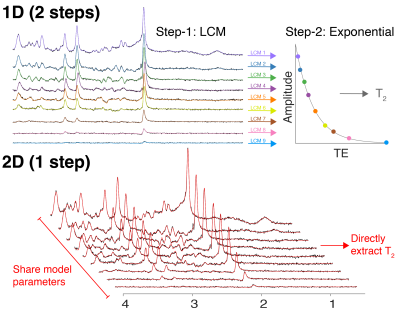 |
Computer Number: 44
4470. Repeatability
and reproducibility of metabolite T2 estimates assessed with 1D
and 2D models
C. Davies-Jenkins, D. Simicic, S. Alcicek, S.
Murali-Manohar, Y. Song, R. Edden, H. Zöllner, G.
Oeltzschner
Johns Hopkins Medicine, Baltimore, United States
Impact: This study of metabolite T2 reproducibility
is the first of its kind and suggests metabolite T2 estimates
are highly reproducible. Our early implementation of the 2D
multi-TE model proved promising with scope for further
development.
|
|
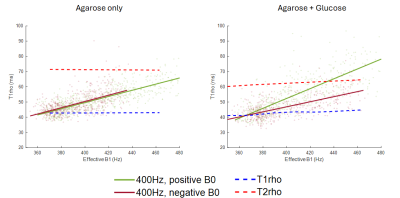 |
Computer Number: 45
4471. Influence
of spin-locking direction on T1rho quantification: evaluation in
phantoms with and without T1rho dispersion property
J. Kim, Z. Zhang, Q. Peng, X. Li
Cleveland Clinic, Cleveland, United States
Impact: A newly documented phenomenon on the T1rho
preparation on different B0 inhomogeneity with magnetization
locked to the effective B1 presents a new question on how to
handle T1rho imaging with added inhomogeneity.
|
|
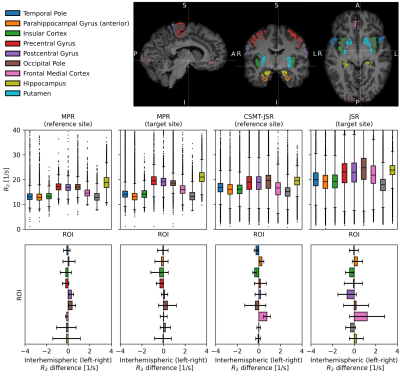 |
Computer Number: 46
4472. Evaluating
fast R2-mapping approaches for application in temporal lobe
epilepsy: a traveling head study
L. Mordhorst, F. Fritz, N. Lüthi, D. Wang, R. Stirnberg, D.
Leitão, P. Bridgen, Z. Ning, J. Finsterbusch, S. Malik, D.
Carmichael, T. Stöcker, S. Mohammadi
University of Luebeck, Luebeck, Germany
Impact: We identify a fast R2 mapping
method with reliable sensitivity to key regions in
drug-resistant temporal lobe epilepsy. Our findings could
expand R2 mapping accessibility for clinical application and
contribute to improved surgical planning.
|
|
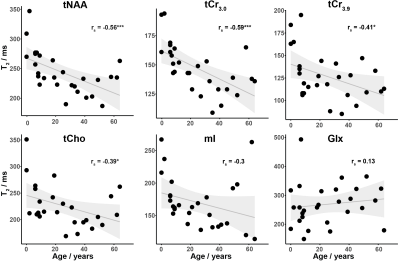 |
Computer Number: 47
4473. Transverse
relaxation of metabolites from birth across the lifespan

Y. Song, A. Gad, C. Davies-Jenkins, S. Murali-Manohar,
H. Zöllner, C. Navarro, M. B. Nebel, G. Simegn, V.
Yedavalli, G. Oeltzschner, R. Edden
Russell H. Morgan Department of Radiology and Radiological Science, Johns Hopkins University School of Medicine, Baltimore, United States
Impact: Current practice in MRS quantification is to
ignore well-known effects of brain-region and subject age on
relaxation times. Location-specific and age-resolved T2 reference
values are a pre-requisite for accurate quantification of
metabolite concentrations with MRS.
|
|
 |
Computer Number: 48
4474. Elucidating
Water Dynamics Driving T1 Relaxation in Biological Filamentous
Structures below 200mT
M. Rhodes, N. Mutch, L. M. Broche
University of Aberdeen, Aberdeen, United Kingdom
Impact: Characterising biological information inferred
by FFC-NMR relaxometry will simplify non-invasive
exploration into how pathology influences molecular
behaviour and provides insight into new applications.
|
The International Society for Magnetic Resonance in Medicine is accredited by the Accreditation Council for Continuing Medical Education to provide continuing medical education for physicians.